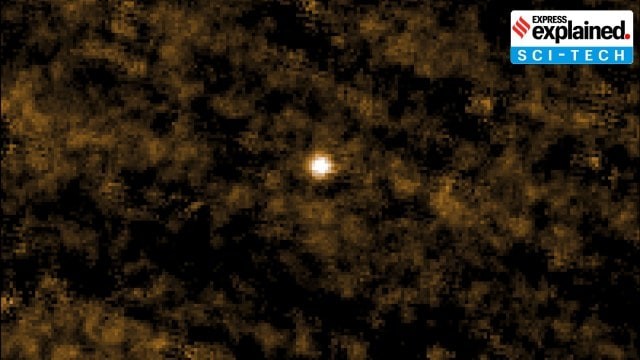



Comet 3I/ATLAS is the third confirmed interstellar object and one of the oldest cosmic bodies ever observed, likely over 7 billion years old. Travelling on a high-speed hyperbolic path, it originates from the Milky Way’s thick disk—unlike earlier interstellar visitors—making it a rare sample of ancient galactic material. Its active coma, large nucleus, and presence of water ice and complex organics provide valuable clues about early planetary environments, organic chemistry, and the evolution of stellar systems beyond our Solar System.

Copyright infringement not intended
Picture Courtesy: Indian Express
NASA has released new high-resolution images of Comet 3I/Atlas, only the third interstellar object ever detected passing through our Solar System. The images come from multiple NASA missions, including Perseverance, MAVEN, Psyche, Lucy, and PUNCH.
|
Must Read: 3I/ATLAS: OLDEST COMET DISCOVERED | INTERSTELLAR | |
Interstellar objects are celestial bodies that originate outside our Solar System and are not gravitationally bound to the Sun. They travel through interstellar space and occasionally pass through our Solar System. They may be comets, asteroids and rocky fragments.
These bodies are ejected from other planetary systems due to collisions and gravitational slingshots by large planets or their stars.
Comet 3I/Atlas is the third confirmed interstellar object passing through our Solar System, after 1I/ʻOumuamua (2017) and 2I/Borisov (2019). It was discovered by the Asteroid Terrestrial-impact Last Alert System (ATLAS) telescope in Río Hurtado, Chile.
Key Features:
Scientific Importance
3I/ATLAS is noteworthy as the first interstellar object linked to the Milky Way’s thick disk, whereas earlier detections came from the thin disk region.
Its ancient composition offers a rare window into primordial galactic material, helping scientists explore:
Source: Indian Express
|
Practice Question Q. Discuss the scientific significance of interstellar objects such as Comet 3I/ATLAS. How do their trajectories, chemical composition, and origins contribute to our understanding of planetary formation beyond the Solar System? (150 words) |
It is the third confirmed interstellar object detected passing through the Solar System, identified in 2025 by the ATLAS survey.
Its motion follows a hyperbolic trajectory with unusually high inbound speed (57–68 km/s), indicating it is not gravitationally bound to the Sun.
Simulations trace it to the Milky Way’s thick disk, a region dominated by ancient stars, making its origin different from earlier interstellar objects.





© 2025 iasgyan. All right reserved